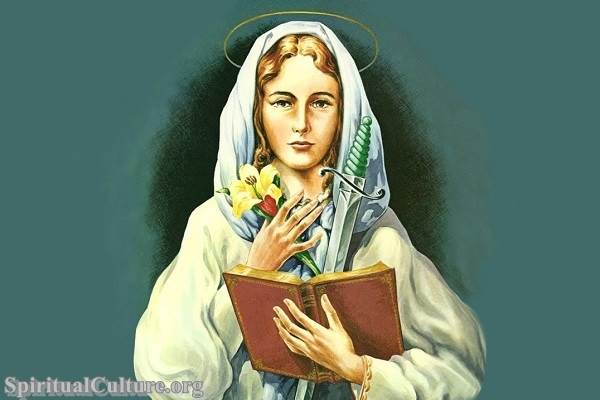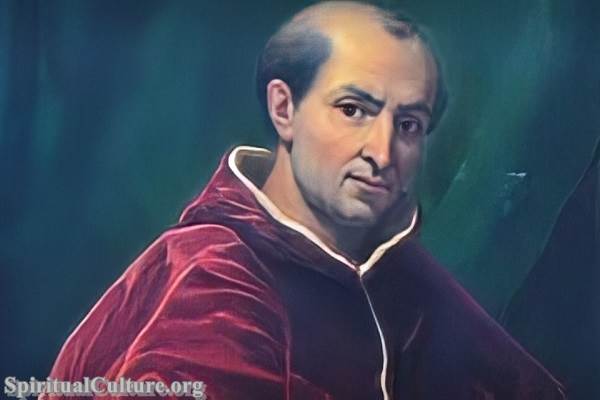Palm Sunday, the Sunday before Easter, stands as one of the most spiritually significant days in Christianity. This day commemorates Jesus Christ’s triumphant entry into Jerusalem and marks the start of Holy Week—a time of reflection, humility, and preparation for the Passion, death, and resurrection of Jesus.
To truly appreciate Palm Sunday, we must explore its biblical roots, historical evolution, and how it is celebrated worldwide.

In this detailed exploration, we will uncover the history, meaning, and customs associated with Palm Sunday, offering a comprehensive understanding of why it remains such a revered occasion.
Understanding Palm Sunday
At its core, Palm Sunday recalls the day Jesus Christ was welcomed into Jerusalem by crowds of people laying palm branches in His path and proclaiming Him as their King. This event, recorded in all four Gospels (Matthew 21:1-11, Mark 11:1-11, Luke 19:28-40, and John 12:12-19), is a cornerstone of the Christian faith.
Palm Sunday symbolizes several significant themes:
- Jesus as King: By riding into Jerusalem on a donkey, Jesus fulfilled Old Testament prophecy, affirming His identity as the Messiah.
- Humility and Servanthood: The donkey, a symbol of peace, contrasts with the image of a conquering king on a horse, emphasizing Jesus’ mission of peace and humility.
- Preparation for the Cross: Palm Sunday sets the stage for the Passion of Christ, marking the final days leading to His crucifixion and resurrection.
Biblical Accounts of Palm Sunday
Palm Sunday’s story is one of the few events recorded in all four Gospels, underscoring its importance. Each Gospel provides unique details that together create a fuller picture of the event:
1. Matthew 21:1-11
Matthew emphasizes the fulfillment of prophecy from Zechariah 9:9, coming of a humble king riding on a donkey is foretold. The Gospel highlights Jesus’ deliberate act to fulfill this prophecy, presenting Him as the long-awaited Messiah. Matthew also notes the crowd’s reaction, shouting, “Hosanna to the Son of David!”—a declaration that identifies Jesus with the Davidic lineage and His rightful claim to kingship.
2. Mark 11:1-11
Mark’s account is concise but rich in detail, focusing on the preparations for Jesus’ entry. The disciples fetch the colt at Jesus’ instruction, showcasing His divine foreknowledge. Mark also captures the atmosphere of jubilation as people spread cloaks and leafy branches along the path, a customary act of homage to a king or victor.
3. Luke 19:28-40
Luke adds a unique perspective by including the Pharisees’ objection to the crowd’s praises. When they ask Jesus to silence His followers, He responds, “If they keep quiet, the stones will cry out.” This underscores the inevitability of His mission and the recognition of His divinity by all creation.
4. John 12:12-19
John’s account provides context for the event, linking it to the resurrection of Lazarus. The crowd’s enthusiasm is fueled by the miracles Jesus performed, especially the raising of Lazarus from the dead. John emphasizes the growing tension between Jesus and the religious authorities, foreshadowing the events of Holy Week.
Together, these accounts weave a rich tapestry of theological and historical significance, inviting believers to reflect on the profound truths of Palm Sunday.
Historical Origins of Palm Sunday
The celebration of Palm Sunday dates back to the early centuries of Christianity, particularly in Jerusalem. Pilgrims visiting the Holy Land during the 4th century documented elaborate processions commemorating Jesus’ entry into Jerusalem.
Early Practices in Jerusalem
Egeria, a 4th-century Christian pilgrim, provides one of the earliest accounts of Palm Sunday celebrations. According to her writings, Christians gathered at the Mount of Olives, carrying palm branches and singing hymns as they processed to the Church of the Holy Sepulchre. This reenactment was deeply symbolic, allowing participants to relive the biblical event.
Spread to Other Regions
By the 7th century, the tradition of Palm Sunday had spread to other parts of the Christian world. Each region adapted the celebration to its local culture and climate. For example, where palm trees were scarce, churches used other plants, such as olive branches, willow, or boxwood.
Liturgical Integration
Palm Sunday became formally integrated into the liturgical calendar as part of Holy Week. The day’s readings, prayers, and hymns reflect its dual themes of triumph and impending sacrifice. The liturgy begins with joy but transitions to a somber tone, preparing worshippers for the Passion narrative.
The Theological Significance of Palm Sunday
Palm Sunday holds profound theological implications that extend beyond its historical context. It serves as a reflection on the nature of Jesus’ kingship and His mission to redeem humanity.
1. Fulfillment of Prophecy
Jesus’ entry into Jerusalem fulfills multiple Old Testament prophecies, including Zechariah 9:9 and Psalm 118:25-26. This underscores God’s faithfulness to His promises and the divine orchestration of salvation history.
2. A Declaration of Kingship
The crowd’s cry of “Hosanna” is both a plea for salvation and a recognition of Jesus as the Messiah. However, their understanding of His kingship was limited to political liberation. Palm Sunday invites believers to recognize Jesus as a spiritual King, whose reign transcends earthly boundaries.
3. A Prelude to the Passion
While Palm Sunday begins with celebration, it foreshadows the suffering and sacrifice of Good Friday. The same crowd that shouted “Hosanna” would later cry “Crucify Him!” This contrast invites reflection on the fickleness of human loyalty and the steadfastness of Christ’s love.
4. The Path of Humility
Jesus’ choice of a donkey instead of a warhorse symbolizes humility and peace, challenging believers to embody these virtues in their lives. His entry redefines the concept of power, showing that true strength lies in service and sacrifice.
Global Traditions of Palm Sunday
Palm Sunday is celebrated across the Christian world, with diverse customs reflecting local cultures and traditions. Here are some notable examples:
1. Palm Processions
Processions are a hallmark of Palm Sunday celebrations. In many communities, worshippers gather outside the church, carrying palm branches or their regional equivalent, and walk in a procession while singing hymns. This reenactment of Jesus’ entry into Jerusalem fosters a sense of participation in the biblical narrative.
2. Palm Crosses
In Western traditions, palm branches are often woven into crosses. These crosses are blessed during the service and kept by families as a reminder of the day’s significance. Some Christians place the crosses in their homes or on graves as symbols of faith and protection.
3. Regional Variations
- Philippines: Palm Sunday, known as Linggo ng Palaspas, is marked by the blessing of intricately woven palm fronds called palaspas. After the service, these are often displayed in homes to ward off evil spirits.
- Spain: Elaborate processions with statues of Jesus riding a donkey are common. Participants dress in traditional robes and carry palms adorned with intricate designs.
- Greece: Orthodox Christians create palm decorations shaped like crosses or flowers, which are blessed and distributed to the congregation.
- Latin America: Colorful parades and dramatizations of Jesus’ entry into Jerusalem are a vibrant part of the celebration.
4. Modern Innovations
In recent years, some churches have incorporated eco-friendly practices by using sustainable or locally-sourced branches. Virtual celebrations have also emerged, allowing believers to participate in Palm Sunday services from home.
Lessons from Palm Sunday
Palm Sunday offers timeless lessons that resonate across cultures and generations:
- Humility: Jesus’ choice to enter Jerusalem on a donkey challenges believers to embrace humility in their lives.
- Faithfulness: The fulfillment of prophecy reminds Christians of God’s unwavering faithfulness.
- Hope: The cries of “Hosanna” symbolize hope for salvation, encouraging believers to trust in God’s plan.
- Self-Reflection: The transition from celebration to betrayal invites introspection on personal faith and commitment.
Palm Sunday in Art, Music, and Literature
The profound themes of Palm Sunday have inspired countless works of art, music, and literature over the centuries.
1. Art
Paintings and sculptures often depict Jesus’ entry into Jerusalem, surrounded by jubilant crowds. Notable examples include:
- Giotto’s Entry into Jerusalem (1305)
- Pietro Lorenzetti’s Christ’s Entry into Jerusalem (1320)
2. Music
Palm Sunday hymns, such as “All Glory, Laud, and Honor,” are staples of the liturgy. Composers like Bach and Handel have also created works that reflect the themes of Holy Week.
3. Literature
Palm Sunday has been a recurring theme in sermons, poetry, and novels. Writers often use the day’s imagery to explore themes of triumph, sacrifice, and redemption.
Practical Ways to Observe Palm Sunday
For Christians seeking to deepen their spiritual experience, here are ways to observe Palm Sunday meaningfully:
- Attend Church Services: Participate in the liturgy and procession to connect with the communal aspect of the celebration.
- Read the Passion Narrative: Reflect on the Gospel accounts of Jesus’ entry into Jerusalem and the events of Holy Week.
- Create Palm Crafts: Weave palm crosses or other decorations as a family activity that fosters reflection.
- Engage in Acts of Service: Emulate Jesus’ humility by helping those in need.
FAQs About Palm Sunday
1. Why is Palm Sunday called “Palm” Sunday?
The name comes from the use of palm branches in the celebration, symbolizing victory, peace, and eternal life.
2. What do palm branches signify?
Palm branches are a symbol of triumph and peace. In ancient times, they were used to honor kings and victors.
3. Can I celebrate Palm Sunday without palms?
Yes, many communities use alternative plants, such as olive branches or willow, when palms are unavailable.
4. What happens to the palms after Palm Sunday?
In many traditions, the palms are blessed and later burned to create ashes for the following year’s Ash Wednesday.
Conclusion
Palm Sunday is far more than a historical commemoration—it is a profound spiritual event that invites believers to reflect on Jesus’ kingship, humility, and sacrificial love. As the gateway to Holy Week, Palm Sunday calls Christians to prepare their hearts for the journey of the Passion and the joy of the Resurrection.
Through its rich history, diverse traditions, and timeless lessons, Palm Sunday continues to inspire faith, hope, and devotion in millions worldwide. By embracing its message, we join in the universal cry of “Hosanna” and reaffirm our commitment to Christ as King.



